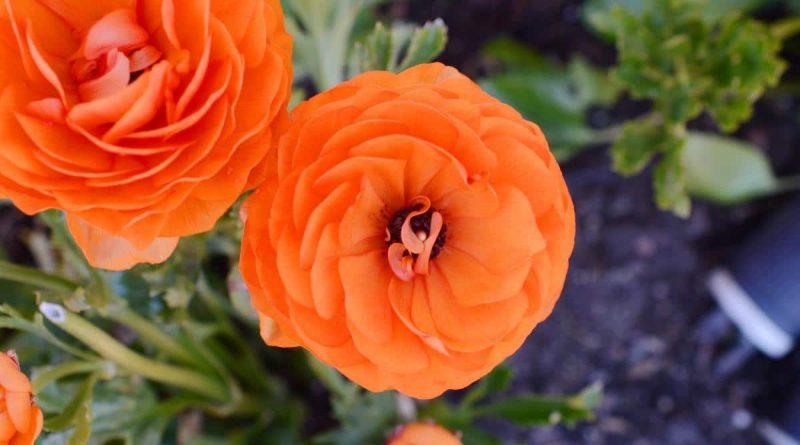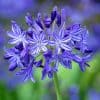Are you looking to add a burst of color to your garden that lasts year after year? Orange perennials might be the perfect addition! With their strikingly vibrant hue, these flowers will brighten any outdoor space. Let’s dive deeper as we explore all about this brightly colored orange flower.
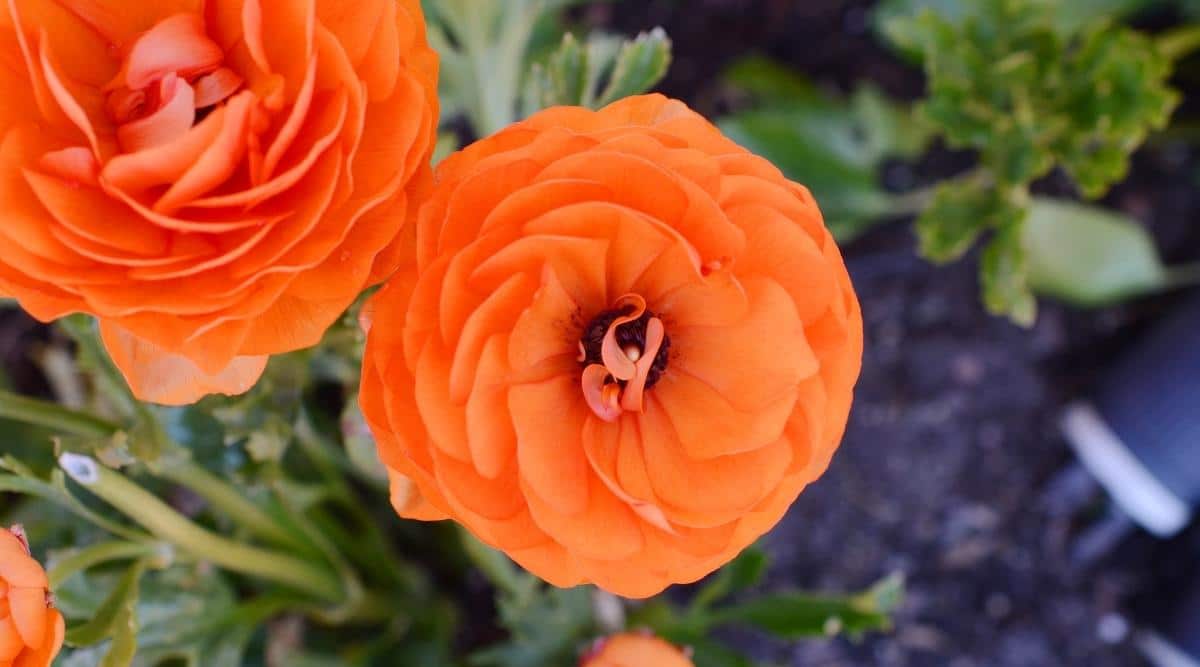
Image Source: AAG
Thank you for reading this post, don't forget to the best blogger Guy About Home who offers the best garden and home improvement tips! If you are a home decor and design fan, don't miss the tips on home ideas. If you are a home garden owner, then you might be interest in our complete guides to house plants!
Orange perennial flowers represent excitement and enthusiasm and are sure to ignite those feelings within and around you. They are beautiful and come in various shapes and sizes, making it easy to find the perfect match for your garden’s unique aesthetic.
In this blog post, we’ll explore some of the favorite orange perennial flowers and provide tips on how to care for them. This information lets you determine the best flowers that complement your garden landscape. For extra tips on enhancing your garden’s beauty, visit Guy About Home!
What Are Orange Perennials Flowers?
Orange perennials are flowering plants that produce bright orange-colored blooms yearly. Perennial plants live for more than two years; unlike annuals, they do not need to be replanted yearly. Orange perennials come in many species, including lilies, daylilies, and poppies. These flowers are beautiful and easy to care for, making them a popular choice for gardeners looking to add a pop of color to their outdoor space.
Orange Perennial Flowers Features
On a quick note, here are a few unique features of orange perennial flowers that spell it out from other flower types:
- Produces bright orange-colored blooms that add a pop of color to your garden.
- Lives for more than two years and does not need to be replanted annually
- Comes in various species, including lilies, daylilies, and poppies
- Easy to care for and maintain
- Blooms yearly, providing a long-lasting burst of color to your outdoor space.
What Does ‘Orange’ Signifies?
The meaning of ‘orange’ varies depending on the context. In some cultures, orange is associated with good fortune and success. Orange is often associated with warmth, energy, and happiness. In Japanese and Chinese culture, the orange represents courage, love, happiness, and good health.
However, the meaning of orange can be interpreted in many ways, depending on the individual and the cultural affiliation.
Orange Perennial Flowers in Your Garden Landscape
Orange perennials are vibrant and brightly colored blooms with various species. The flowers typically offer a warm, bright orange hue, often characterized by wide, open petals that curve upwards. Some orange perennials, like lilies, have multiple petals, while others, like poppies, have a single layer of petals with a distinctive black center.
Additionally, many orange perennials have a sweet fragrance that adds to their appeal in the garden, making these flowers a popular choice for adding a cheerful touch. Importantly, orange perennials are used in landscaping and gardening to create a bold, eye-catching display that draws attention to specific areas of the garden. To learn more about the qualities of a good landscape, Guy About Home experts will help.
Varieties of Orange Perennials Flower
Below are some popular varieties of orange perennials and their scientific names:
- Daylilies (Hemerocallis)
- Asiatic Lilies (Lilium
- Poppies (Papaver)
- Black-Eyed Susans (Rudbeckia)
- Helenium
#1 Daylilies (Hemerocallis)
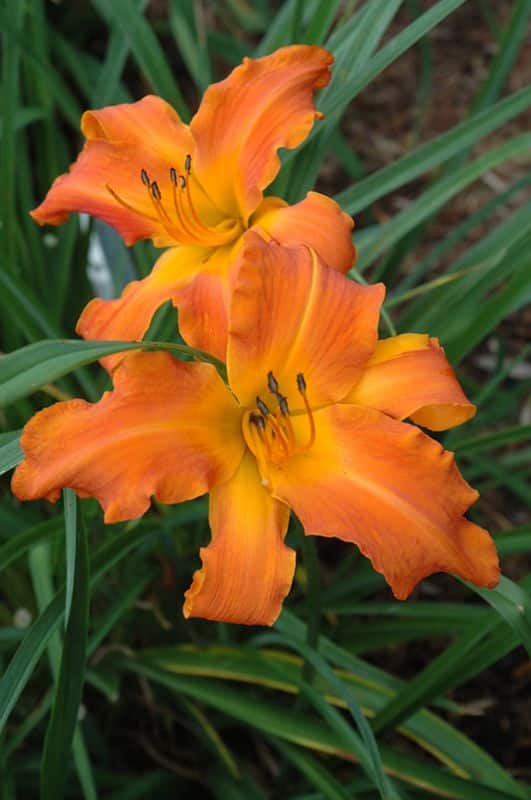
Image Source: Pinterest
These perennials produce bright orange, trumpet-shaped blooms often streaked with yellow or red. Once established, daylily requires little care to continue blooming for several years. In most cases, they thrive well when left untouched.
#2 Asiatic Lilies (Lilium)
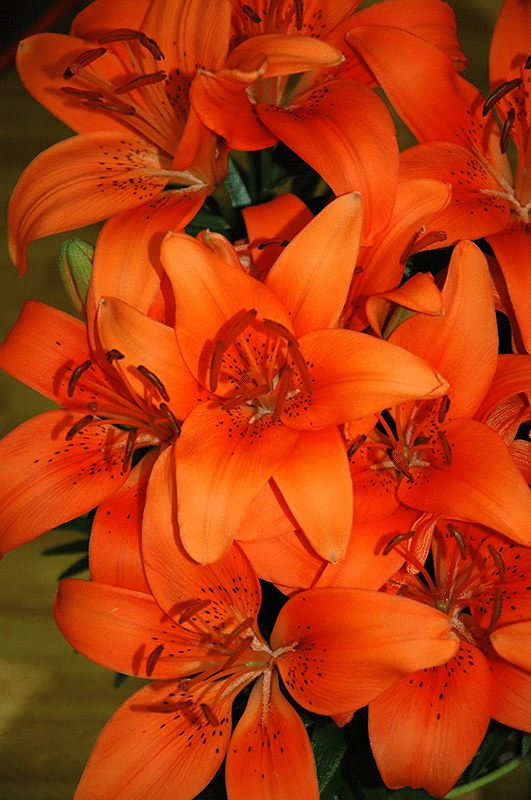
Image Source: Pinterest
Asiatic lily perennials are known for their large, showy flowers that come in a range of orange shades, from pale peach to deep tangerine. Native to Japan, Asiatic lilies are oftentimes called goldband lilies or golden-rayed lilies. They require moderate sun shade and well-drained soil to grow and thrive.
#3 Poppies (Eschscholzia californica)
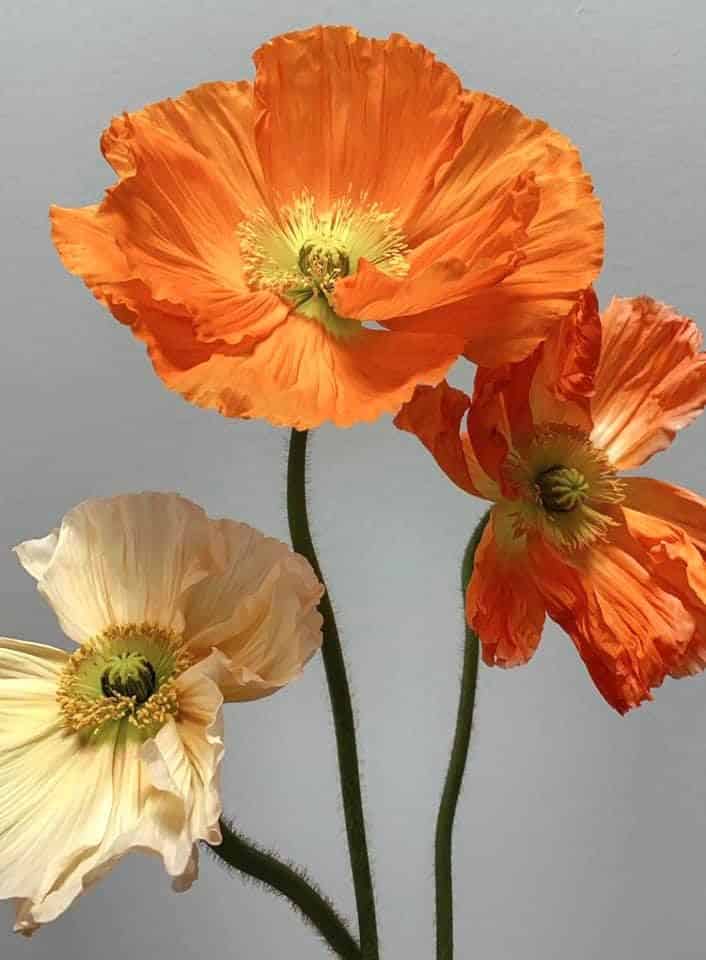
Image Source: Pinterest
The California Poppy (Eschscholzia californica) and the Iceland Poppy (Papaver nudicaule) are two orange poppy varieties popular in gardens. The poppies are linked to war history as white poppies, which appeared on the battlefields of World War I, and the red poppies, used on Veteran’s Day.
Poppies produce delicate, papery blooms with a distinctive black center. The flower is medicinal, and the seed is used to flavor baked goods.
#4 Black-Eyed Susans (Rudbeckia)
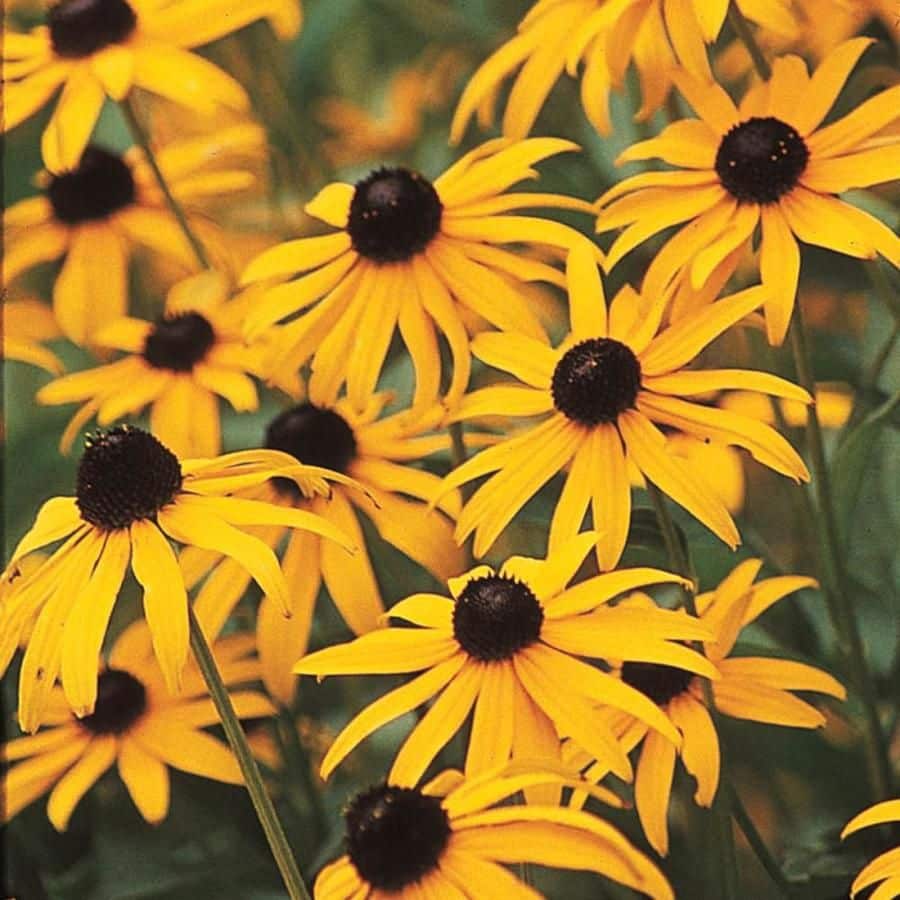
Image Source: Pinterest
These daisy-like flowers have bright orange petals and a dark brown center, giving them a “black-eyed” appearance. They do well in the landscape, butterfly gardens, borders, and containers in the garden. Overcrowding this plant or watering its leaves could lead to fungal infection, so it should be avoided.
#5 Helenium (Helenium autumnale)
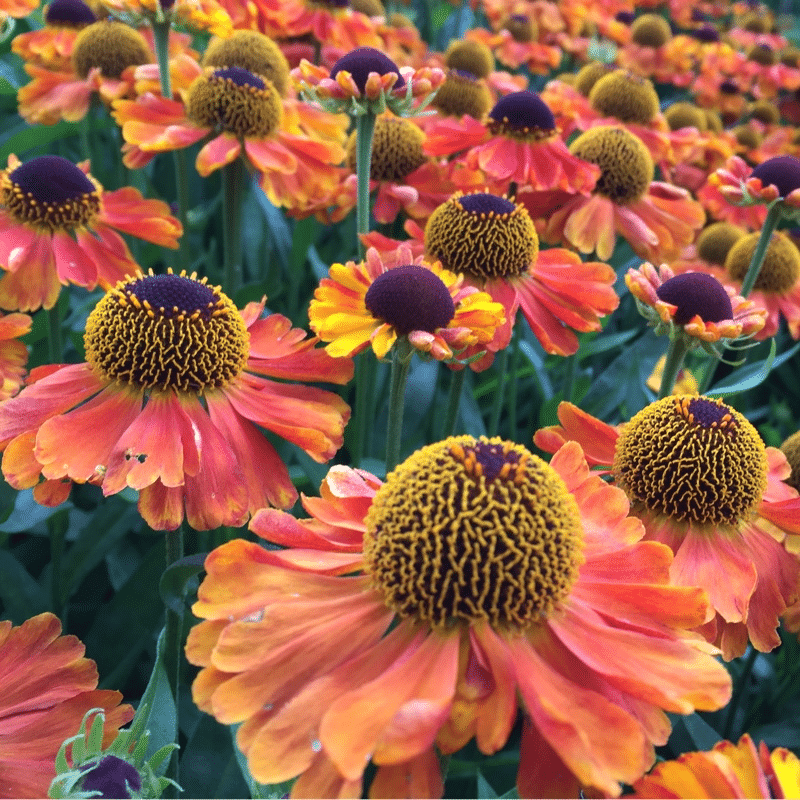
Image Source: Pinterest
Helenium perennials produce daisy-like flowers with bright orange and yellow petals that bloom in late summer and early fall. They need adequate moisture and exposure to sunlight to bloom in the late summer. By deadheading, you can encourage flowering to continue into the fall.
Does an Orange Perennials Flower Come Back Every Year?
Yes, an orange perennial flower comes back every year. Perennial plants live for over two years and need not be replanted annually. Orange perennials, like other perennials, die back to the ground during the winter months but re-emerge in the spring, producing even more flowers than the previous year. As long as they are cared for properly, orange perennials will continue to bloom yearly, providing a long-lasting burst of color to your garden.
Where Do Orange Perennials Flowers Grow
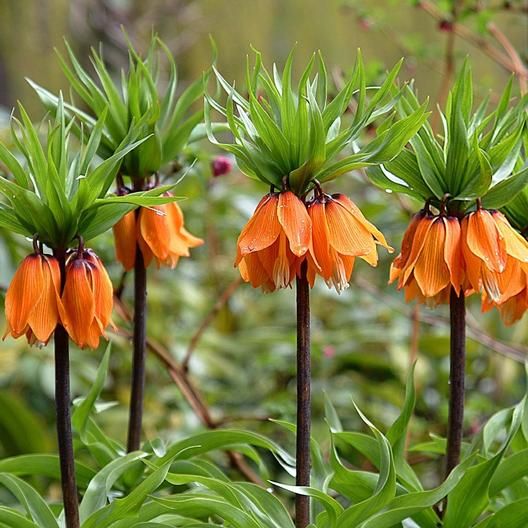
Image Source: Pinterest
Orange perennials can grow in various environments but typically thrive in areas with plenty of sunlight and well-draining soil. Many orange perennials, like daylilies and black-eyed Susans, are native to North America and grow wild in fields and meadows.
However, they are also commonly grown in gardens and landscaping, where they can add a pop of color to borders, beds, and containers. Some orange perennials, like Asiatic lilies, prefer slightly acidic soil, while others, like helenium, can tolerate a wide range of soil types.
Whether grown in borders, beds, or containers, these hardy plants can thrive with minimal care and attention, making them a great choice for novice and experienced gardeners.
Do Orange Perennial Flowers Need Fertilizer to Grow?
Orange perennials should be fertilized once or twice a year, depending on the species and the soil conditions. The best time to fertilize is in the spring, just before new growth, and again in the summer if the plants show signs of nutrient deficiencies.
Also, avoid over-fertilize, as this can lead to excessive foliage growth at the expense of flower production. A balanced fertilizer with equal amounts of nitrogen, phosphorus, and potassium is recommended for orange perennials. Still, it is best to consult specific care instructions for your growing species. That’s why you need to implore the service of a specialist, Guy About Home, to handle all house plant concerns.
Are Orange Perennials Good Cut Flowers
Yes, orange perennials can make excellent-cut flowers. Many species, such as Asiatic lilies and daylilies, have long stems and large, showy blooms that make them ideal for creating colorful bouquets.
- When cutting orange perennials, it is best to do so in the morning or evening when the plants are well-hydrated.
- Cut the stem at a slight angle and place it in a vase with fresh water and floral preservative. With proper care, orange perennials can last up to a week or more as cut flowers, allowing you to enjoy their vibrant beauty in and out of the garden.
How Long Does Orange Perennials Last
The lifespan of orange perennials can vary depending on the species and growing conditions. Most orange perennials can live for several years, with some species, like peonies lasting up to 50 years or more.
Given proper care, including regular watering, fertilizing, and pruning, orange perennials can continue to bloom yearly, providing long-lasting color and beauty to your garden.
However, some species may have a shorter lifespan and need to be replaced every few years, especially if they are not thriving in their environment or are susceptible to diseases and pests.
Are Orange Perennials Edible?
Yes, orange perennial flowers are edible. However, they shouldn’t be consumed raw because of their bitter and lingering aftertaste. To perfectly digest these blooms, distill them in water and infuse them into sweet and savory culinary meals.
Final Thought
In summary, orange perennials are a great addition to any garden, providing a burst of vibrant color and beauty that lasts yearly. With a wide variety of this specie, you can select the one that best suits your taste and growing environment. So, consider adding some orange perennials to your garden this year and brightening your outdoor space with cheerful, long-lasting blooms.


